Blog
July 20th, 2012
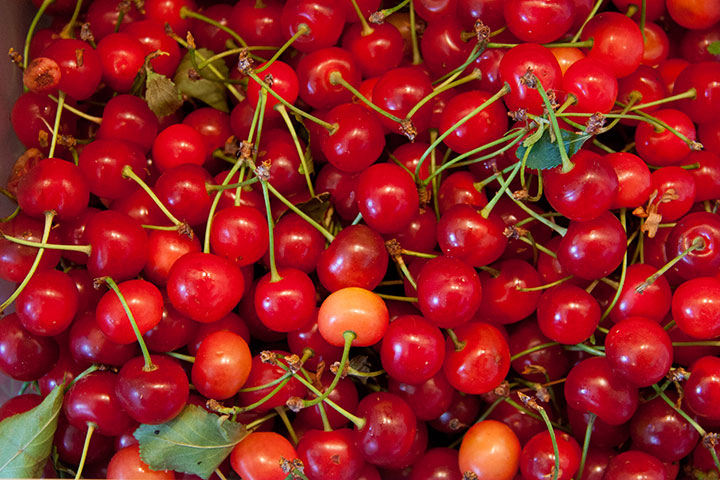
Picture a Chuck-E-Cheese-ball-pit-sized vat of pie cherries: that’s what our kitchen feels like right now.
The Tailor loves fresh sour pie cherries with a fiery passion, but they don’t grow well in western Washington (not enough sun). And they’re both hard to transport commercially (thin skins) and not super popular with folks under the age of 80 (too much work). So as you can imagine, even though home canning is a big part of everyday life around our house, he hadn’t been able to add cherries to the routine.
Until now.
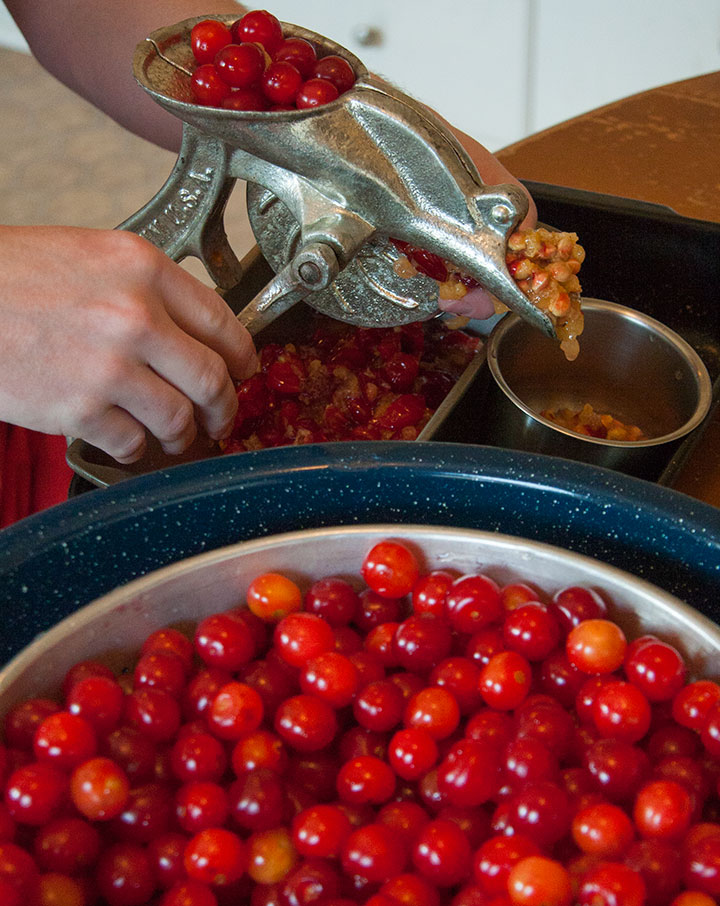
He managed to find a farmer on the other side of the mountains who specialized in pie cherries. To make it worthwhile for both the farmer to harvest them fresh, and the Tailor to drive three hours one way, he ordered a metric boatload.
So now our kitchen is filled with pitted cherries.
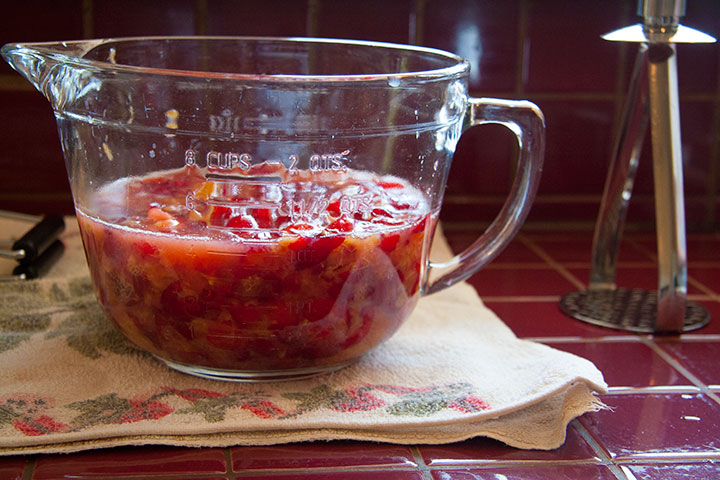
And mashed cherries.
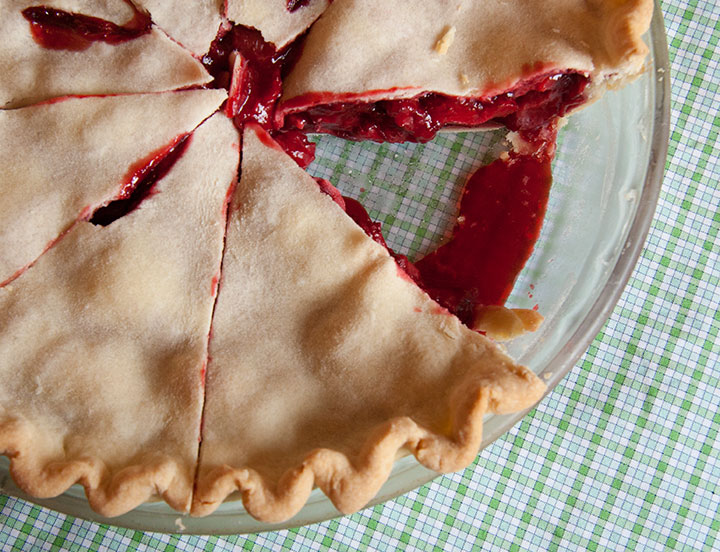
And pie’d cherries.
I gotta say—I finally see what all the fuss is about! That is one tasty labor of love.
December 20th, 2011
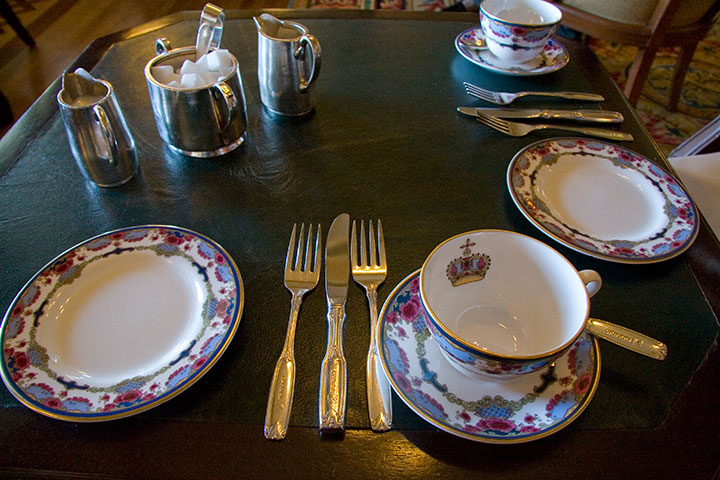
No stay at the Empress is complete without sitting down to Afternoon Tea.

Now, I love a good cuppa no matter where I am, but leaning back in a squashy chair and gazing upward at something like this makes every sip a little more special.
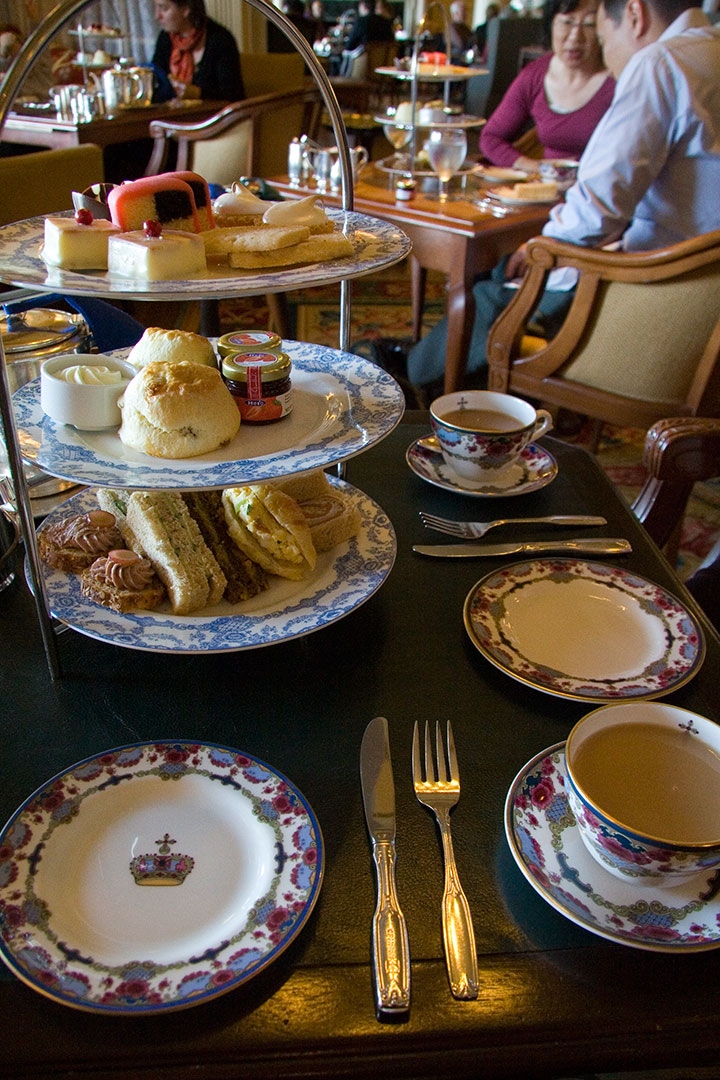
The Empress has been pouring tea every afternoon since it opened in 1908—it was the first venue in Victoria to offer it to the public.
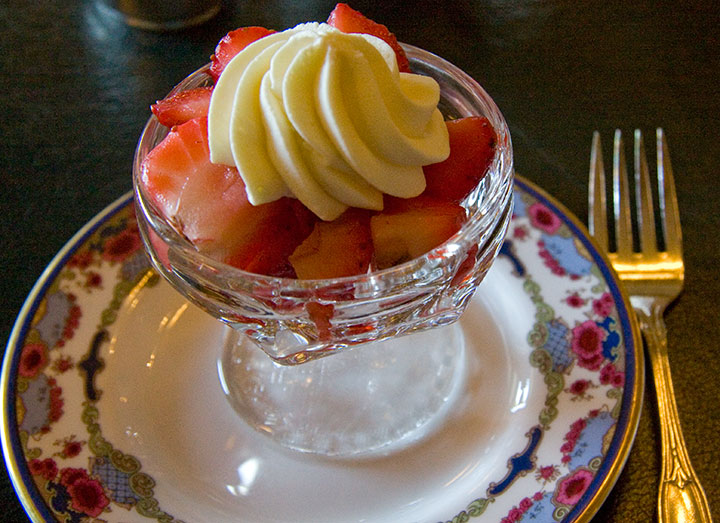
For over a century it’s been one of the city’s biggest tourist draws, but it was easy to forget all about the crowds. Somehow it felt like a quiet, private meal at the home of a dowager aunt. Not normally my, uh, cup of tea, but I loved how unexpectedly cozy it was.
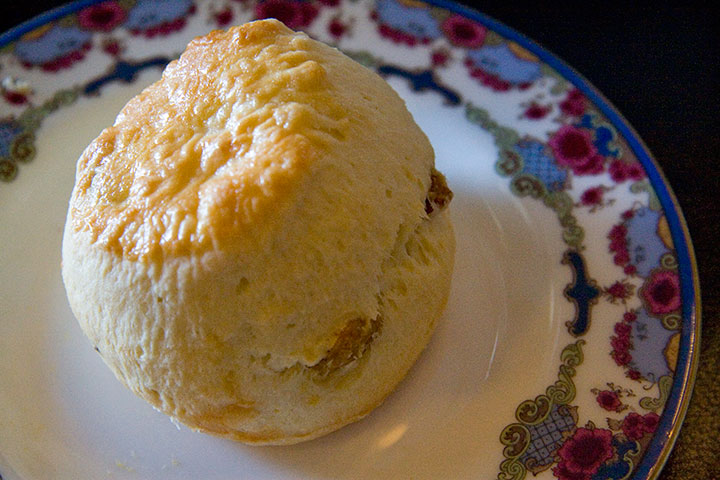
The scones made me miss the Tailor. He would have loved them—and then tried to figure out the recipe.

The savory course was to die for. It was a curious, perfect mix of England (curried chicken, cucumber finger sandwiches) and the Pacific Northwest (best smoked salmon ever). Two months later, I can’t even look at this photo without the memories flooding my taste buds and making me salivate.
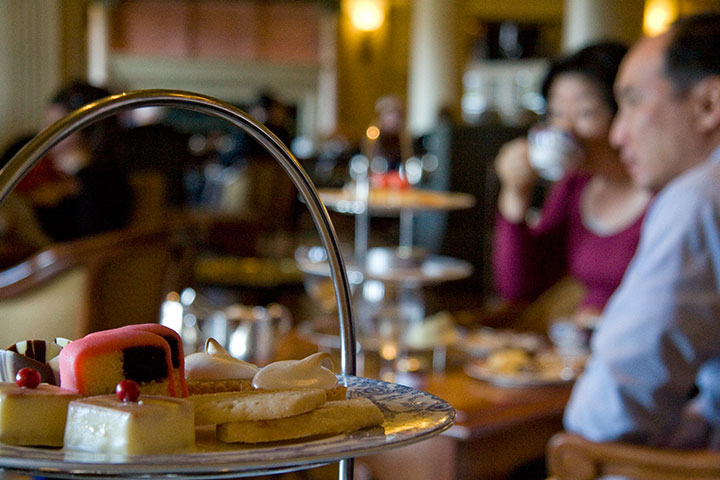
The Inner Harbour just outside the window, a good friend across the table, and a seemingly endless array of flavors to hand: the perfect recipe for a relaxing Sunday afternoon.
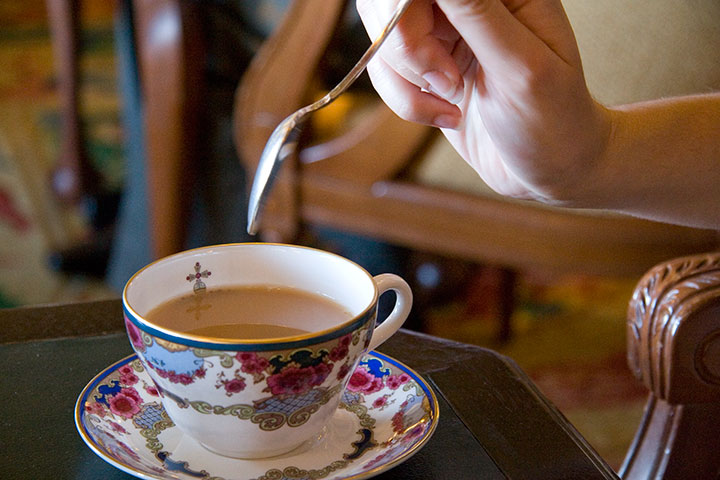
December 4th, 2011
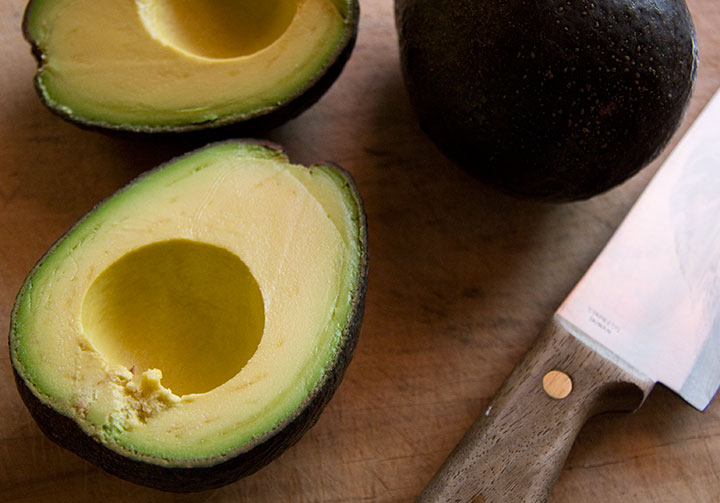
The Tailor and I were talking today about holiday traditions. In his family, it’s standard fare to find an orange in one’s stocking on Christmas morning. He’s originally from Kansas, where the tradition hearkens back to the days when citrus fruit was an exotic luxury. I remember my grandmother telling me a similar story about her childhood Christmases—she grew up on a farm in Nova Scotia, and an orange in the 1920s Maritimes must have been about as singular as it would have been in, say, Laura Ingalls’s stocking.
If you mostly subsist on local, seasonal produce, those old tales mean a lot more than they would otherwise. After all, all the Florida oranges and Chilean strawberries in the supermarket don’t matter much if you choose not to partake of them. So today, when I cut into the huge, beautiful avocados Sarah and Jesse had brought with them from California when they came for Thanksgiving, I think I knew how Nana, and the Tailor’s ancestors, and Laura Ingalls must have felt all those years ago. Jesse bought them green, directly from the farmer, so they’d have time to ripen for us here. Sarah wrapped each fruit individually in paper, and packed them carefully in a tin. And then together they journeyed for two days to give them to us in person. I can’t think of a more precious gift than that.
We’re just finishing up our Christmas lists this weekend, and planning the final round of gift shopping. I know the Tailor will be expecting the annual orange in his stocking, just for tradition’s sake. So maybe I’ll ask Santa for an avocado in mine.
September 17th, 2011

Many of my favorite towns (Boulder, Missoula, Portland, the other Portland, Duluth, Tacoma, Providence, etc.) seem to be kindred spirits to one another. There’s something about the coming-together of historic architecture, blue-collar grittiness, a population full of creative types and surrounding natural beauty that … well, for which I’m a total sucker. So based on all the reports over the years I’ve had about Asheville, I knew it was going to be my kinda place.

When Jessica and I were there last month for the Ladies of Letterpress Conference, we made sure to give ourselves plenty of extra time to go exploring.
Asheville is nestled in the thick of the Blue Ridge Mountains, which turned nearly every direction we looked into a beautiful panorama.
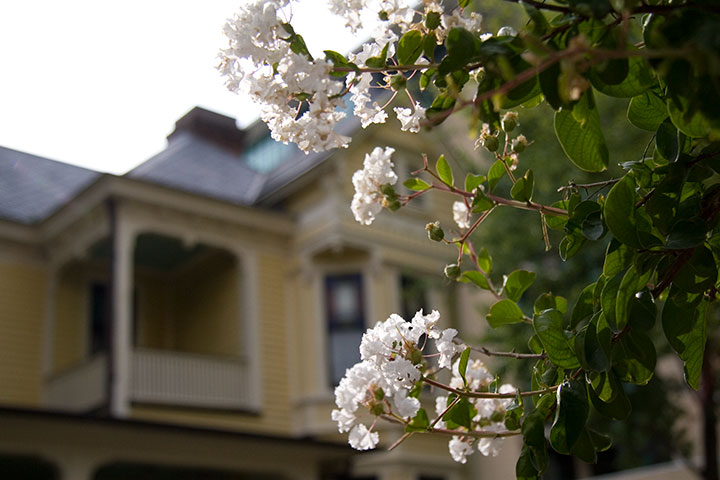
The lush, southern climate gave us the feeling that we were walking through an urban greenhouse. Everything was in full bloom and living color.

The city’s history is visible around every well-preserved corner.
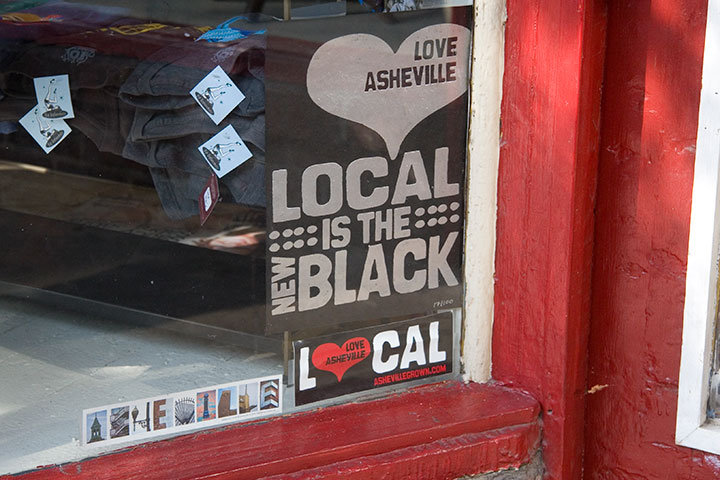
Unfortunately, that preservation is often an accidental outcome in towns that are slowly withering—but that was far from the case here. Despite an economically troubled past, Asheville is a vibrant, active city, complete with a fierce sense of local pride. We saw some variation of these signs in every shop and restaurant window, over and over again. (Hint, hint, Tacoma!)
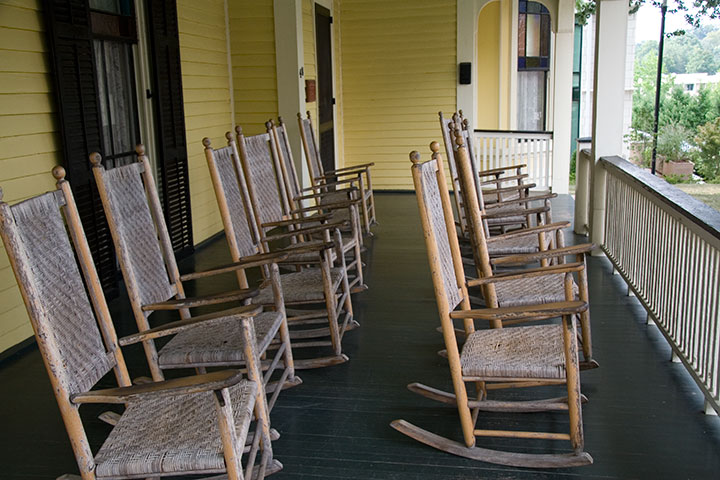
But above all, there was a comfortable sense of down-home warmth in every quarter. Everyone we met was sweet as pecan pie, and the whole place seemed to invite us to settle in and relax. And the rocking chairs! I swear, we saw them everywhere—even at the airport! That’s a tradition I can get behind—I mean, sit down upon.

I could go on and on all day about Asheville’s charms as a city, but what I really want to talk about is the food. Oh, the food. And I know that saying so doesn’t exactly make me your typical Yankee, but I have a real thing for Southern cuisine. And after trying a new restaurant at every interval for five days, I’m convinced that it’s nigh impossible to have a bad meal in Asheville.
I’ll never understand the point of chain restaurants. When I travel, I’m not interested in the generic food you can get anywhere in America—I want local flavor. When in Rome, you know? So whenever I’m in a new place, I usually order whatever the restaurant is particularly known for, which is often some sort of local specialty. It’s never steered me wrong yet.
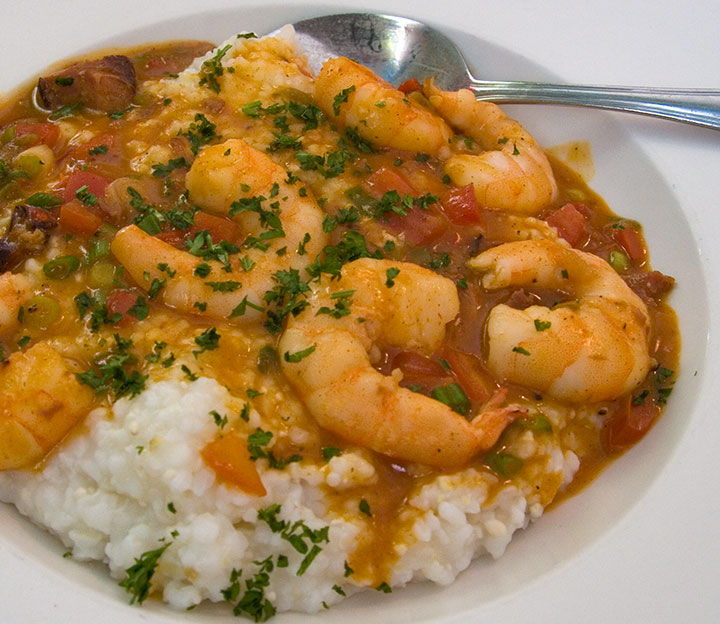
So at the Early Girl Eatery, I had the shrimp n’ grits. What’s more Southern than that? And more importantly, what could possibly be more tasty? As if that weren’t enough, the garnish on the grits was the fact that everything on the menu was locally source, and whenever possible, organic. Plus, they served the real, no-kidding, hard-core stone-ground coarse grits—the ones the Tailor and I love so much that we actually order them from a North Carolina mill and have them shipped out west as one of our staple grains. (Yes, I know we’re weird.)
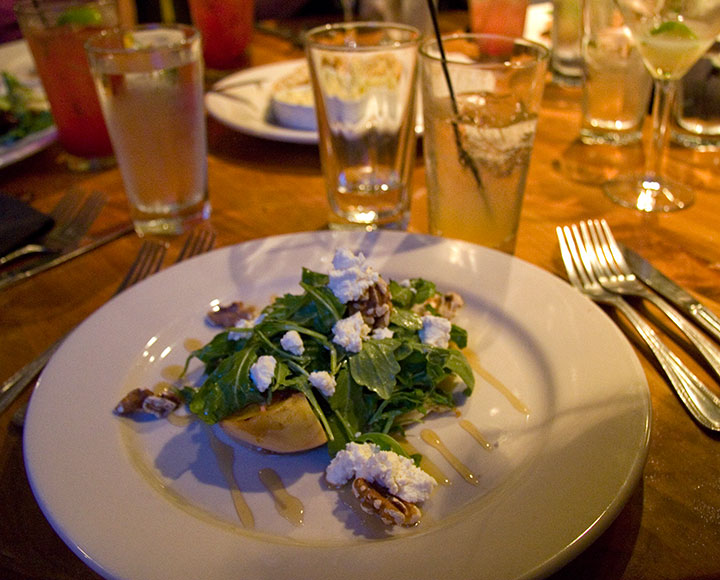
The Southern boasted both local and seasonal fare (and terrible lighting for photographs, sorry), and their peach, pecan, goat cheese and honey salad was like summer on a plate.
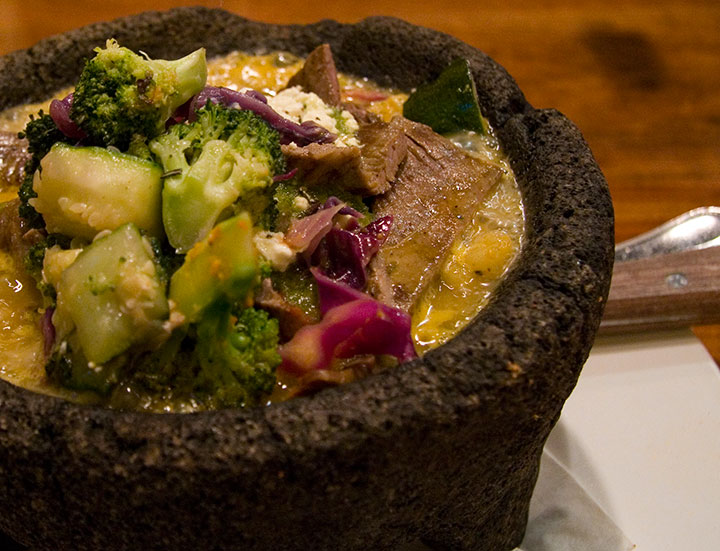
When a large group of letterpress folks joined us at Salsa’s, Southern cookin’ wasn’t exactly on the menue, but I stuck with my rule-of-thumb about the house specialty, and as usual, it was the right choice. This time I ordered their famous molcajete, a traditional Mexican mortar-and-pestle carved out of basalt, heated to something like earth-core temperatures, and filled with a molten and unbelievably delicious stew. The secret ingredient was goat cheese again, which is always a-okay with me. Besides, for someone who loves nerdy scientific things like specific heat, this dinner took the cake—even though it was nearly an hour before I could eat it without my face melting.
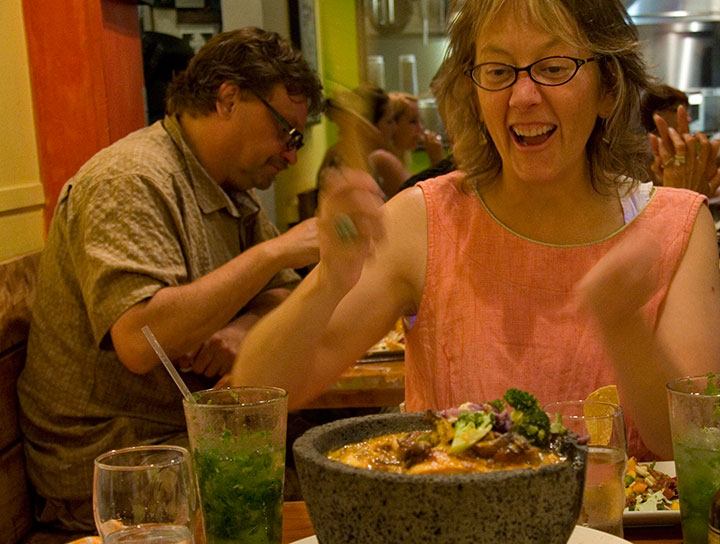
(Jessica was a fan of the molcajete, too.)

Now, I like lemonade, sweet tea and unsweet tea as much as the next gal, but I’ve always been a coffee drinker. And after three years as a transplanted Northwesterner, I’m a total convert to the coffee culture; a late-morning walk just doesn’t feel right without a cuppa. It was 95 muggy degrees outside, so an iced Americano hit the spot—and at the Battery Park Book Exchange, they’ll serve it to you in snazy wine glasses and let you while away the whole caffeinated day paging through the impressive North Carolina section.
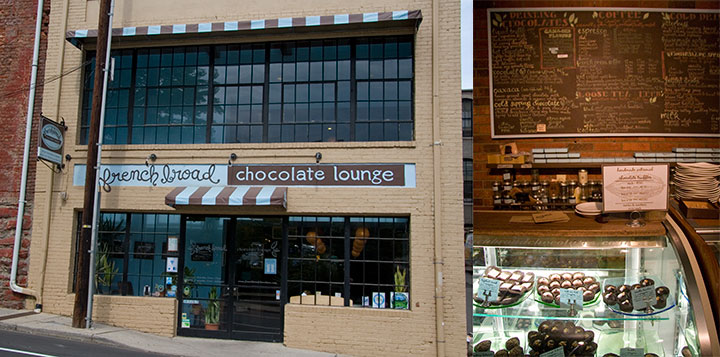
One of the people we befriended at the conference is an Asheville native who let us in on the secret about where to get the best dessert in town. Handmade chocolates. ‘Nuff said.

Still, it was the Southern classics I was the most hungry for—like this gigantic sweet potato pancake at the Tupelo Honey Cafe. It came garnished with spicy pecans and escorted by a side of grits with—you guessed it—goat cheese. Like nearly every other meal I had in Asheville, it was light and deftly made (though impossible to finish!), and completely unlike the heavy, greasy stereotype people have in their heads. With each bite I was more and more baffled by the idea that anyone could dislike Southern food.

Of course, no sojourn below the Mason-Dixon Line would be complete (for omnivores, at least) without a taste of authentic, heart-attack-inducing Southern barbeque. To get our fix, Jessica and I headed for Luella’s.
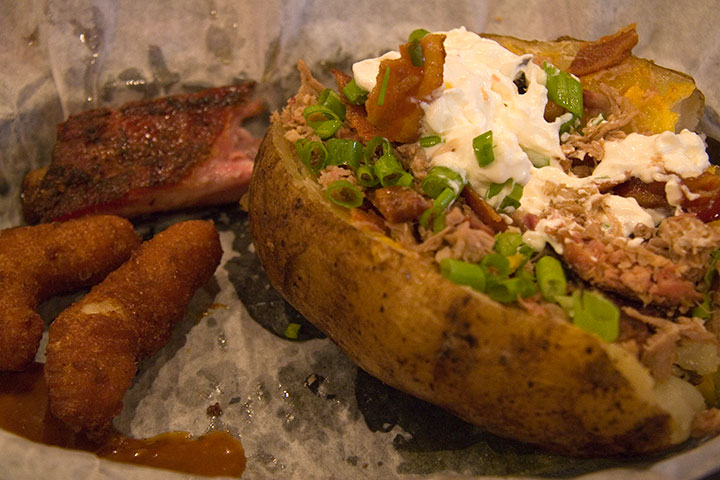
Neither of us could decide, so we ended up eating family-style and sharing everything. I picked the giant stuffed baked potato with everything plus the kitchen sink and a coronary on top (shown here with a bit of Jessica’s spare ribs). Which was fantastic, truly, but it was the hush puppies that stole the show. Best. Freaking. Hush puppies. Ever. I think the secret is in the shape—greater crispy-to-fluffy ratio. Yum.

But my favorite meal of the trip was one that will probably live in my all-time top ten forever: fried-green-tomato eggs Benedict (with a side of grits, natch!) at the Over Easy Cafe. I still dream about that one.

I’m also still dreaming of that blue haze. Whether it’s for the local flavor or the letterpress gals, the hush puppies or the hills, you can bet I’ll be back.
November 10th, 2010

Maybe it’s the changing seasons. Or the fact that the farmers market runneth over with delicious autumn goodies. Or maybe we just wanted to talk about something that made us smile, for a change—because this time, for our tenth Dead Feminist broadside, Jessica and I have turned to a subject somewhat lighter of heart.
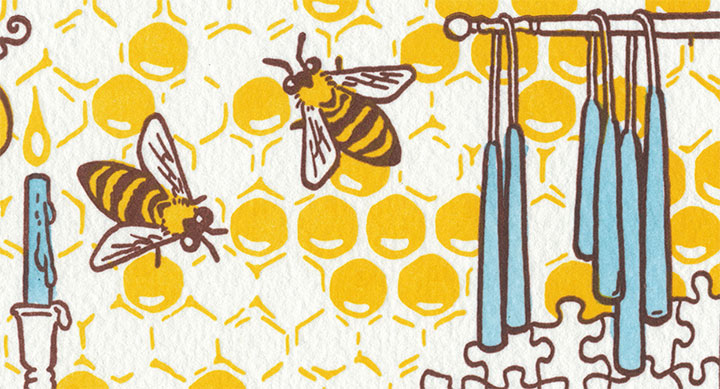
From the likes of urban homesteaders, artisans, D.I.Y.-ers, and hobbyists of all stripes, brilliant handiwork is all around us. We are in constant admiration of the power of one’s own two hands, and the good deeds they can do. And for the perfect symbol of a handmade life infused with joy and meaning, we’ve handed the microphone to Elizabeth Zimmermann:
One tends to give one’s fingers too little credit for their own good sense.

Now, as many of you probably know, Ms. Zimmermann was a knitter (that’s an understatement; I’d say more like All-Time Super-Queen Knitter of the Cosmos, Forever and Ever, Amen). But like every knitter, there is so, so much more to her than that. So rather than simply leaving it at yarn and wool, we discovered a cornucopia of the pursuits that fingers like to turn to when they’re not knitting. There are no idle hands here, to be sure.

Just in time for the fall harvest and in cozy preparation for the winter months ahead (or for our friends in the southern hemisphere, looking forward to a fruitful summer), Get Handy overflows with simple pleasures and home comforts. Elizabeth drafts a cable pattern and whips up a Fair Isle yoke. A little slow food takes root in the garden. Honeybees guard a new crop of candles. Fresh home-canned treats stock the shelves. Chickens scratch along a fence of golden (darning) eggs. Over a cup of tea, puzzles piece together and checkers crown kings. And when they’ve put down the yarn and scissors, the hands spell it out for you in American Sign Language.
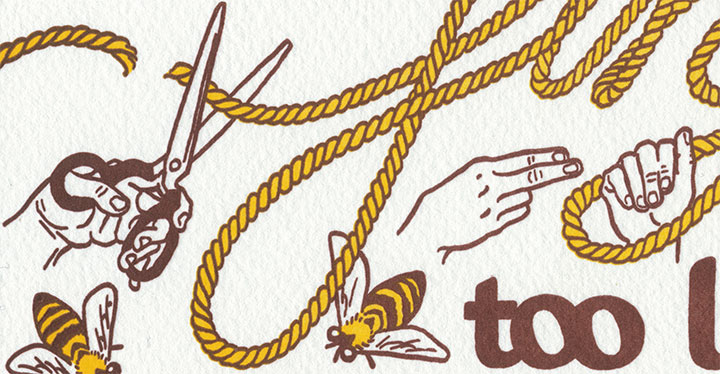
Oh, and the Tailor’s blueberries and Jessica’s dilly beans make a cameo appearance. Yum.

A portion of the proceeds from Get Handy will be donated to the amazing healing hands of Médecins Sans Frontières / Doctors Without Borders, via Tricoteuses Sans Frontières / Knitters Without Borders, which organizes knitters to raise funds for MSF/DWB. MSF, winner of the 1999 Nobel Peace Prize, is a medical relief organization dedicated to assisting people in distress around the world.
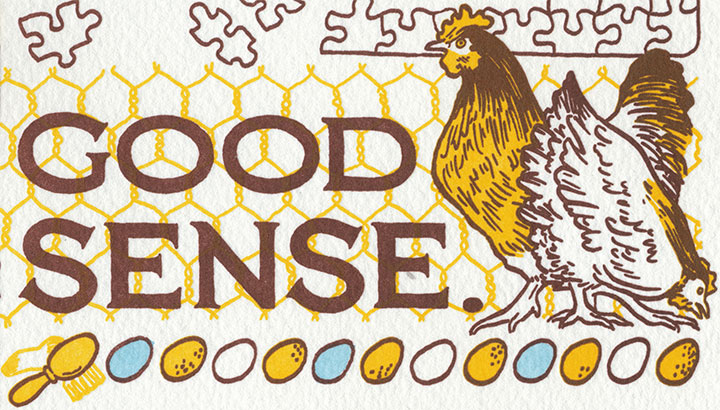
• • • • • • • • • • • • • • • • • • • • • • • • • • • • • • • • • • • • • • • • • • • • • • • • • • • • • • • • • • • •
Get Handy: No. 10 in the Dead Feminists series
Edition size: 158
Poster size: 10 x 18 inches
Printed on an antique Vandercook Universal One press, on archival, 100% rag paper. Each piece is hand-colored and signed by both artists.
Colophon reads:
Elizabeth Lloyd-Jones Zimmermann (1910 – 1999) was a British-born master knitter. EZ (as she was known by legions of knitters) moved to the United States and founded Schoolhouse Press in the 1950s, teaching a new approach to knitting through original designs, newsletters, books and a television series. Her no-nonsense approach was laced with humor and readily applied to life beyond knitting, from encouragement in experimentation to trusting one’s own instincts. Americans were reintroduced to the easier, faster German or Continental style of knitting, which had fallen out of favor during WWII, while EZ encouraged students to think on their own using EPS (Elizabeth’s Percentage System) to easily size garments. EZ’s daughter Meg had continued her knitting legacy, most likely inspired by her mother’s motto: “Knit on with confidence and hope, through all crises.”
UPDATE: poster is sold out. Reproduction postcards available in the Dead Feminists shop!

June 5th, 2010
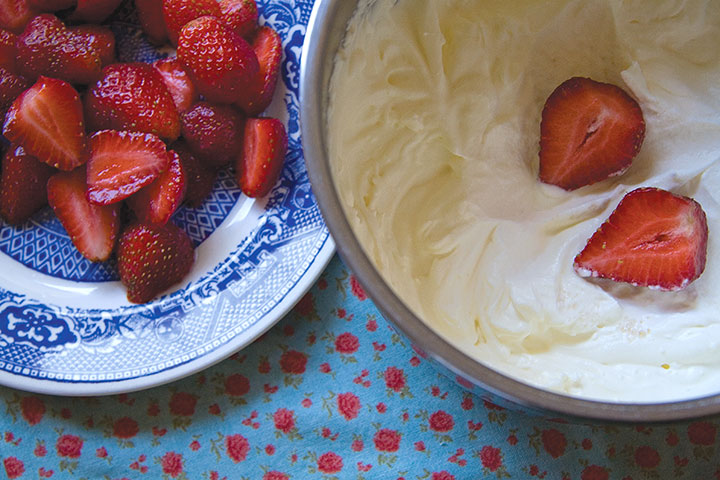
If I ran the world, there would be a national holiday to celebrate the first strawberries and cream of the season. This is worth the closing of stores, school cancellations, paid vacation time. I would send greeting cards for this. Happy Berry Day!
May 2nd, 2010
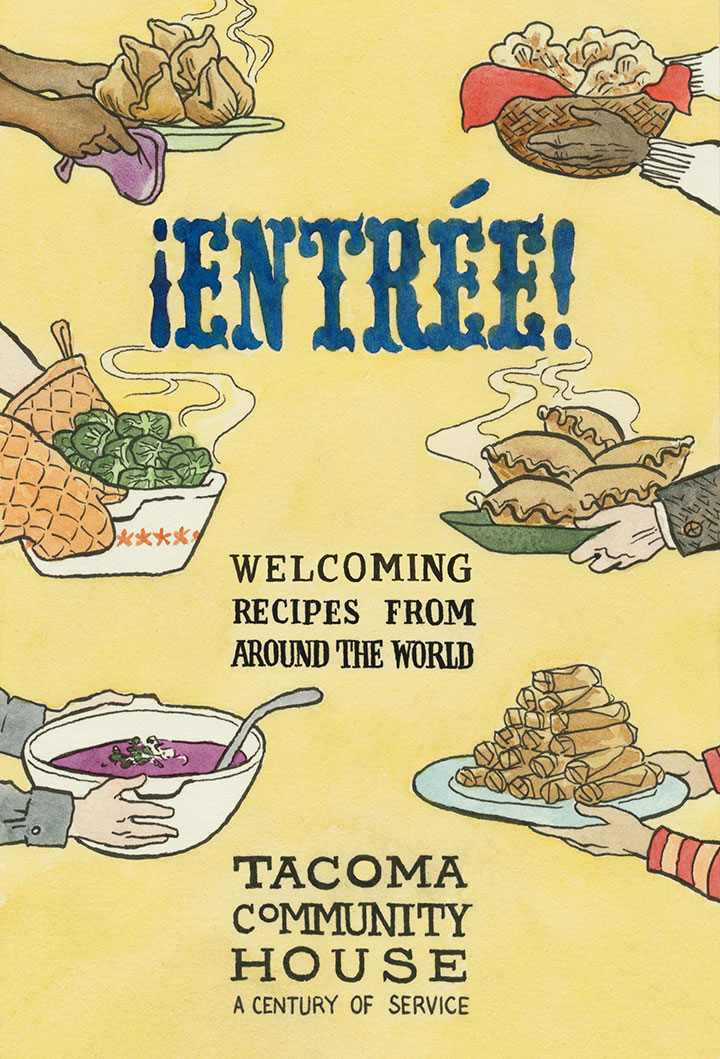
I think it’s time to get that new wok I’ve been meaning to buy, because I have a feeling it’s going to get a lot of use. The cookbook I illustrated is now available, and I can’t wait to give it a whirl.
Tacoma Community House has been serving Tacoma’s immigrant community for decades, offering an enormous range of educational and social services to its clients—including language translation and interpretation, job training, citizenship assistance, and employment programs. The diversity of clients is astounding—in the last year alone, TCH served clients from fifty-four countries. To bring their clients together and welcome them to the community, TCH has a tradition of holding potluck dinners. As a result, they’ve compiled an impressive collection of international recipes over the years. In honor of their 100th anniversary this year (can you believe that?), TCH has compiled a collection of their favorites into a cookbook: ¡Entrée!

I have a feeling they had quite a job of editing; ¡Entrée! contains over 140 recipes from five world regions. Even the name is a play on this diversity, combining the inverted exclamation point from Spanish with a French term.


Dishes represented here include empanadas, tabouli, spring rolls, moussaka, samosas, gazpacho, cottage pie, a wide range of curries, and even American Indian fry bread.
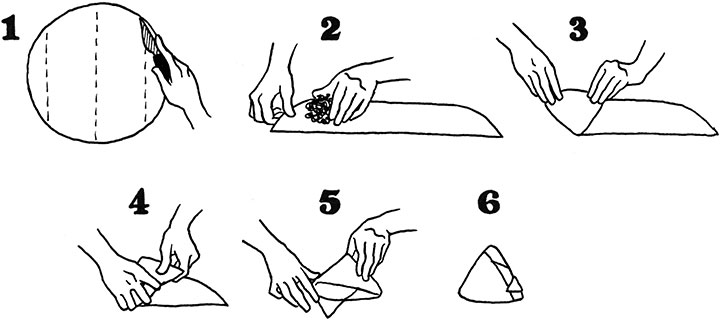
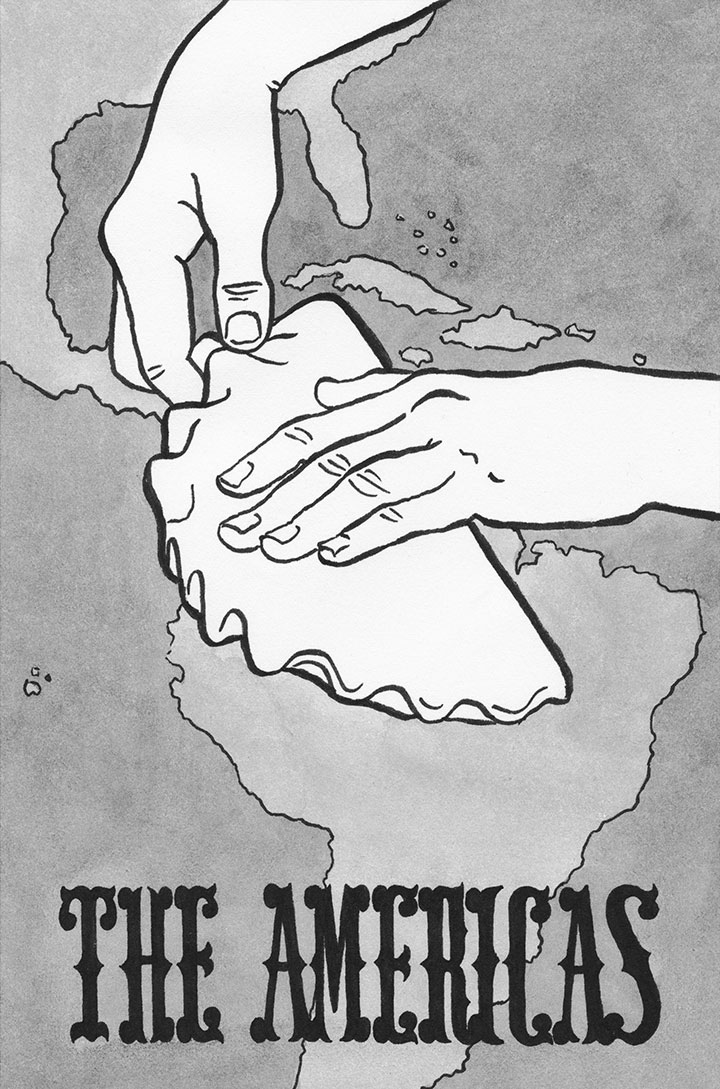
To bring all these recipes together into a cohesive theme, all the illustrations focused on hands—which came in handy for the step-by-step instructions.
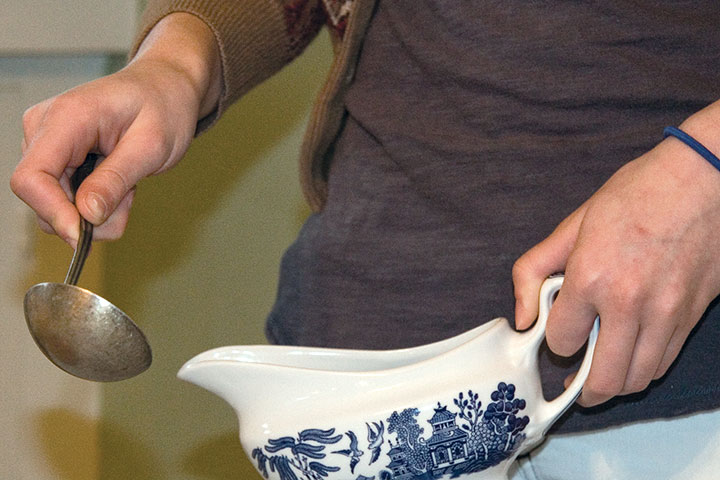

(Hence all the hand-modeling by Zooey.)

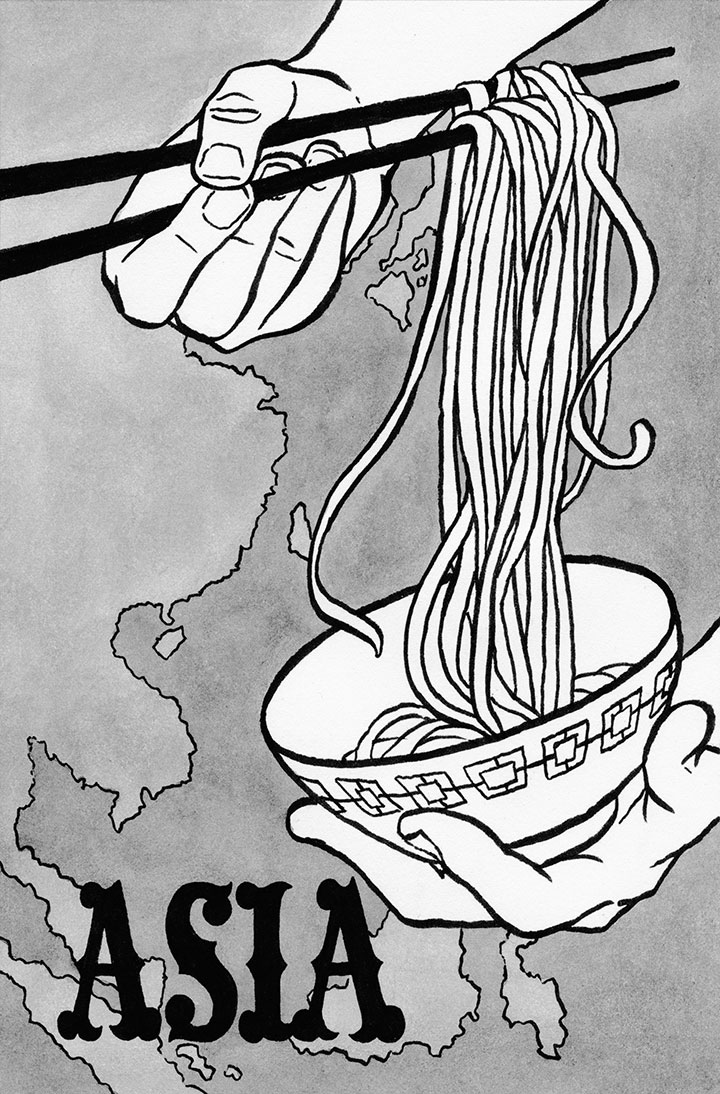
Each recipe is as authentic as it gets—instead of being filtered through some chef or ethnic restaurant, these dishes come directly from the family traditions of TCH’s clients. They even passed the Tailor test (and he has high standards!)—no processed ingredients, no store-bought shortcuts, no mention of canned cream-of-mushroom soup. He even gave the English plum pudding recipe (which is one of his specialties) his stamp of approval.
I think I’ll be trying this one first:
Arroz Mexicano (Mexican Rice)
1/2 cup tomato sauce
1/2 cup water
2 green onions, chopped
2 cloves garlic, chopped
1/4 tsp salt
2 Tbsp lard or cooking oil
1 cup long grain rice
Tip: It’s important in Mexican rice to fry the rice before you add the liquids. It will make a difference in the texure and taste.
1. Mix tomato sauce and water together; add green onions, garlic and salt to the tomato sauce.
2. Heat lard or oil in a sauce pan on medium-high heat; add the rice and cook till slightly brown.
3. Add tomato sauce mixture and lower the heat; add more water of the mixture does not cover the rice. Cover and let simmer for about 20 minutes or until liquid is gone from the pan.
4. Lard is used by many Mexican families for cooking instead of cooking oils.
Oh, and about the lard: heck, yes. If you’ve ever tried refried beans at an authentic Mexican restaurant, the lard is what makes it taste so good. Don’t be afraid—a little lard won’t kill you. Go ahead and try it! Learn it, love it, lard it.
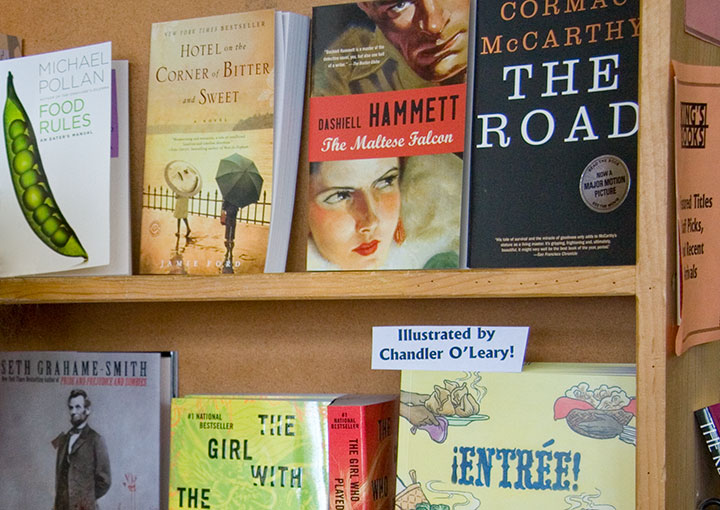
I loved working with TCH (and with Hana K., their talented designer, who treated my illustrations with such care), but even better was seeing ¡Entrée! on a bookstore shelf. You can find a copy in town at King’s Books, or you can try more sample recipes and order online here.

March 15th, 2010
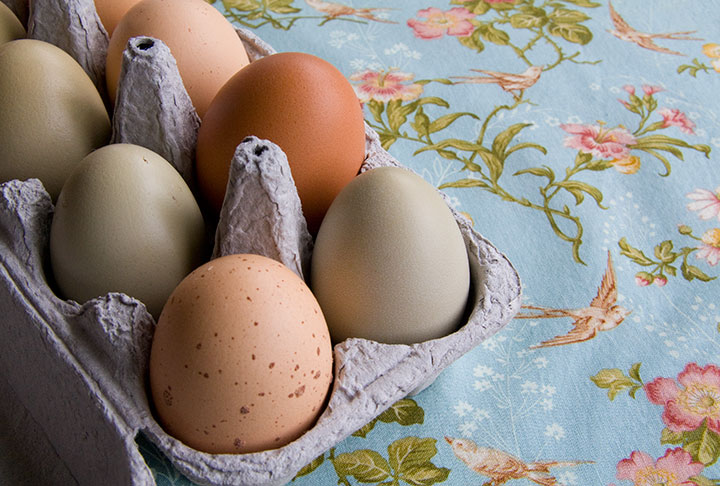
We buy our eggs from a friend’s urban farmstead—every time we get a new delivery, I get more excited about the colors in the carton than the prospect of fresh omelettes. Is that weird?
December 6th, 2009
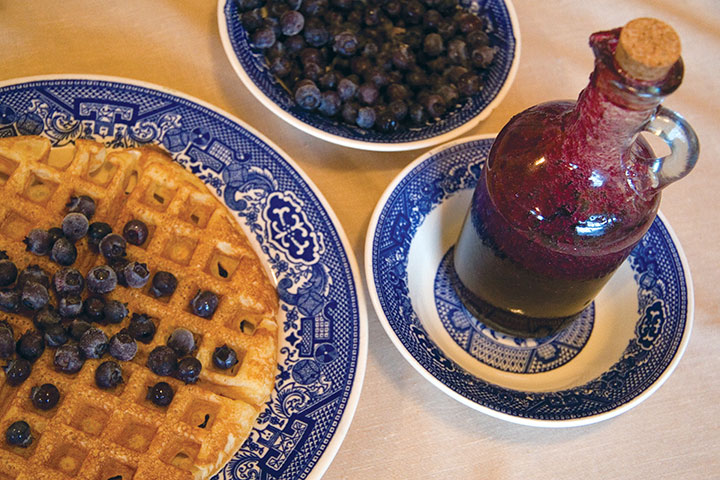
For months now we’ve been finding new ways to use our stores of dried, home-canned and preserved blueberries. But we almost forgot about the containers of fresh berries we threw in the freezer—and on this unseasonably cold* morning, whipping up a little reminder of summer seemed like a good idea.
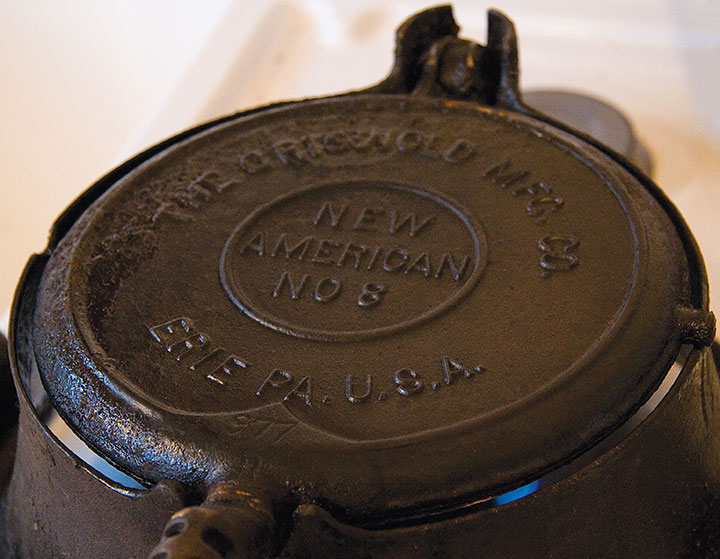
So the Tailor fired up the Cast-Iron Stovetop High-Collared No. 8 Griswold Waffle Iron™ (say that five times fast!), and we had ourselves a good old-fashioned hot breakfast—which, incidentally, goes great with the homemade blueberry syrup above, but the Tailor won’t share that recipe, I’m afraid.
No-Kiddin’ Waffles
2 ¼ cup flour
4 tsp. baking powder
¾ tsp. salt
1 ½ Tbsp. sugar
2 eggs, beaten
2 ¼ cup whole milk
½ cup oil (we use Canola)
Sift the flour, baking powder and salt three times, then add the sugar. In a separate bowl, mix the beaten eggs, milk and oil. Add this to the dry ingredients and mix thoroughly. While some people like to make their batter ahead of time, we’re firm believers in using fresh-fresh-fresh batter. So for best results, make your waffles right then and there.
Oil your cast-iron waffle iron well before starting. Heat both sides of the iron thoroughly (the advantage of a high-collared iron like this is even heating and plenty of room to flip waffles), and remember to apply oil after every third or fourth waffle—a bristle brush is handy for this.

Use a 1/2 cup measure to dip batter—one dip per waffle—and pour the batter into the center of the iron. When you close the lid, the batter will wick evenly into all the nooks and crannies.
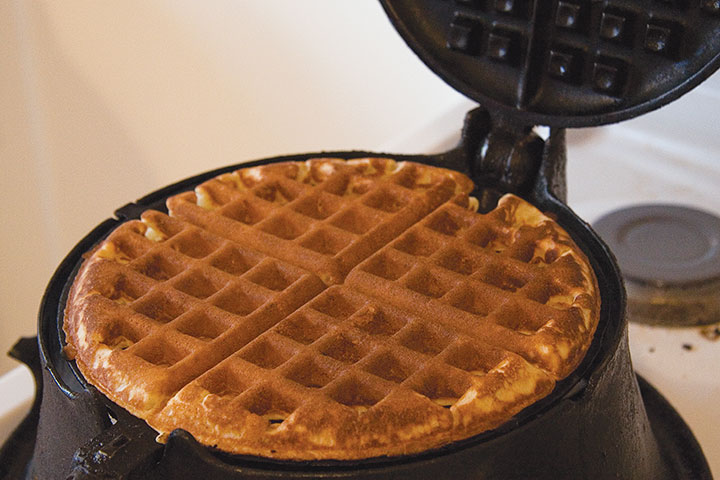
Cook the waffle for 3-4 minutes (peek occasionally to make sure your iron isn’t too hot!), flipping frequently—every thirty seconds or so. The best part (other than the flipping, that is)? Waffles are kind of like pizza—you can jazz them up however you like with your favorite breakfast condiments. But eat ’em fast—a jazzed-up waffle will get cold and soggy** before too long.
That’s never a worry around here, though—these babies get gobbled up long before the next waffle is ready!
• •••••••• ••••••••• ••••••••• ••••••••• ••••••••• ••••••••• •••••••••
* I know all you Minnesotans are rolling your eyes at this declaration, but a nighttime temperature of 17°F is enough to force us to rescue our squash colony from the attic, which isn’t insulated for “real” winter. So until the attic temperature stays above freezing, our pumpkins and butternuts are living in the spare bedroom like edible houseguests—definitely one of the less glamorous aspects of living seasonally.
** I’m really into the specific heat of foods. Mashed potatoes? High specific heat. Fresh waffles? Sadly low.
October 27th, 2009

Now that we live in a vacation destination, we tend to get a lot of out-of-town visitors. We have a list of favorite places to take first-timers, so we can often be found at places like the Pike Place Market, Point Defiance, and Mt. Rainier with house guests in tow. When a pair of French foodies arrive on your doorstep, however, it’s a whole ‘nother ballgame. Our friends Gilles and Jean-Philippe had just one major request for their visit last weekend: mushroom hunting. Since it’s chanterelle season and the weather was good, Saturday seemed like a good day to lace up our hiking boots and grab our pocket knives.
Disclaimer! The Tailor and I are not experienced mushroom gatherers, so we’d never try this on our own—incorrectly identifying edible fungi is not a mistake one wants to make. Even the most detailed books can’t replace the presence of a skilled guide, so if you don’t have your own French mycophile on hand to take you hunting, skip the risk and buy a bag of chanterelles at the farmers market!
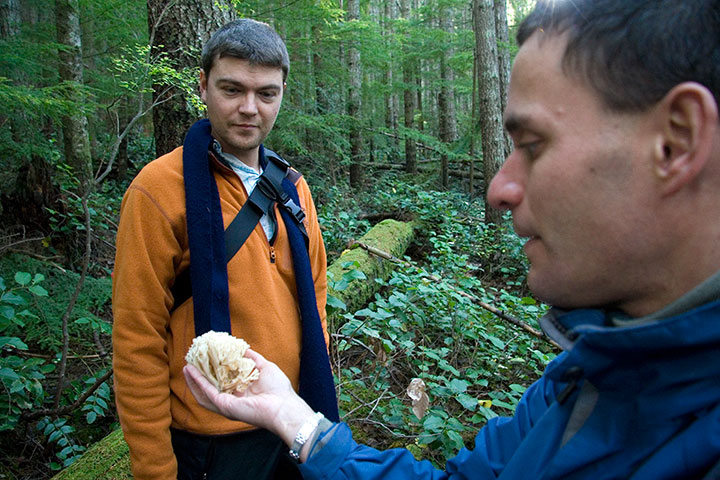
As far as dinner ingredients go, we came away empty-handed—the conditions just weren’t right. But as a crash course in the sheer diversity of local fungi, it was a spectacular day; we found several dozen different varieties ranging from beautiful to bizarre; delicate to disgusting.

We did find a few edible species (these orange peel cups were a beautiful and exciting highlight), but nothing worth turning into a meal. So the day turned out to be more of a scientific field trip—certainly a worthwhile adventure in its own right.
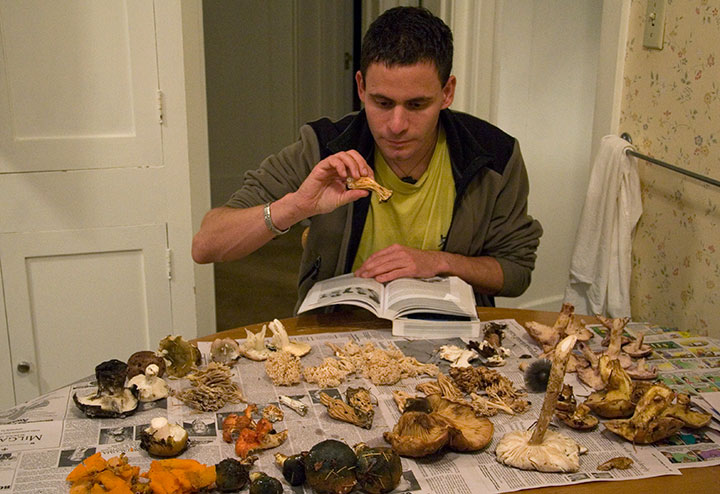
When we got home, Gilles spread out our haul and set to work identifying, making us laugh whenever he called out something strange (stinkhorn, elfin saddle, hedgehog—called sheep’s foot or pied-de-mouton in France).

As for me, all this mushroom-naming reminded me of the newest addition to my reference library: the stunning Pictorial Webster’s, by book artist John Carrera (for a mind-blowing art experience, check out the video on the process behind the book here). So I took a page out of his book (sorry, I couldn’t resist), and did a little visual taxonomy of my own.
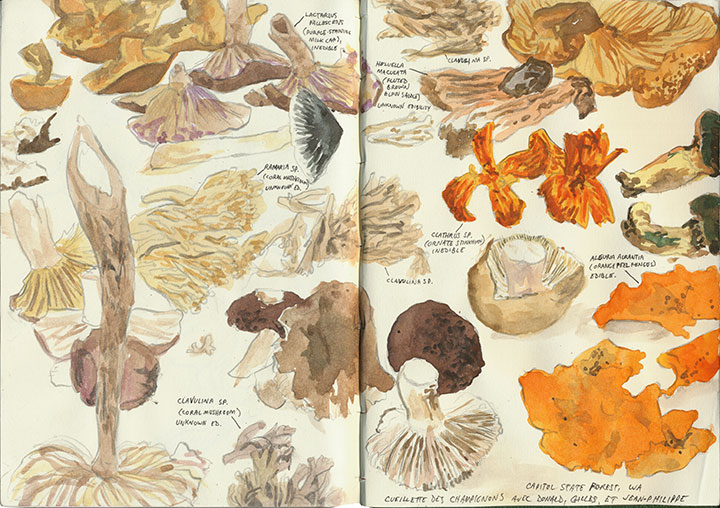
Jean-Philippe, meanwhile, had the best idea yet: purchasing a pound or two of fresh chanterelles, and putting his mad French cooking skills to work. The sumptuous champignons dish he whipped up disappeared into our mouths long before I thought to grab the camera, but I did remember to ask for the recipe:
Chanterelles à l’improvisation
– 1 1/2 pounds fresh chanterelle mushrooms, halved
– 1/2 cup bacon (3 slices or so)
– 1 medium yellow onion, chopped
– 4 to 5 Tbsp olive oil
– 1/4 cup dry white wine (the Muscadet we had on hand was great)
– dry parsley to taste (fresh is better, but we didn’t have any)
– salt and pepper to taste
Brown the bacon until crisp, then break into small pieces. In a separate, large pan (so as not to overpower the mushrooms with the flavor of bacon fat), sautée the onions in olive oil over medium-low heat until lightly browned. Add the chanterelles, bacon, salt, pepper, and white wine, and sautée until the mushrooms are slightly limp and drained of most of their water content (oh, say 5 or 6 minutes). Season with parsley at the very end, then serve either alone or over brown rice. Watch the dinner conversation devolve into a series of satisfied grunts.

![Chandler O'Leary [logo]](https://chandleroleary.com/wp-content/themes/chandleroleary/images/logo.png)





























































